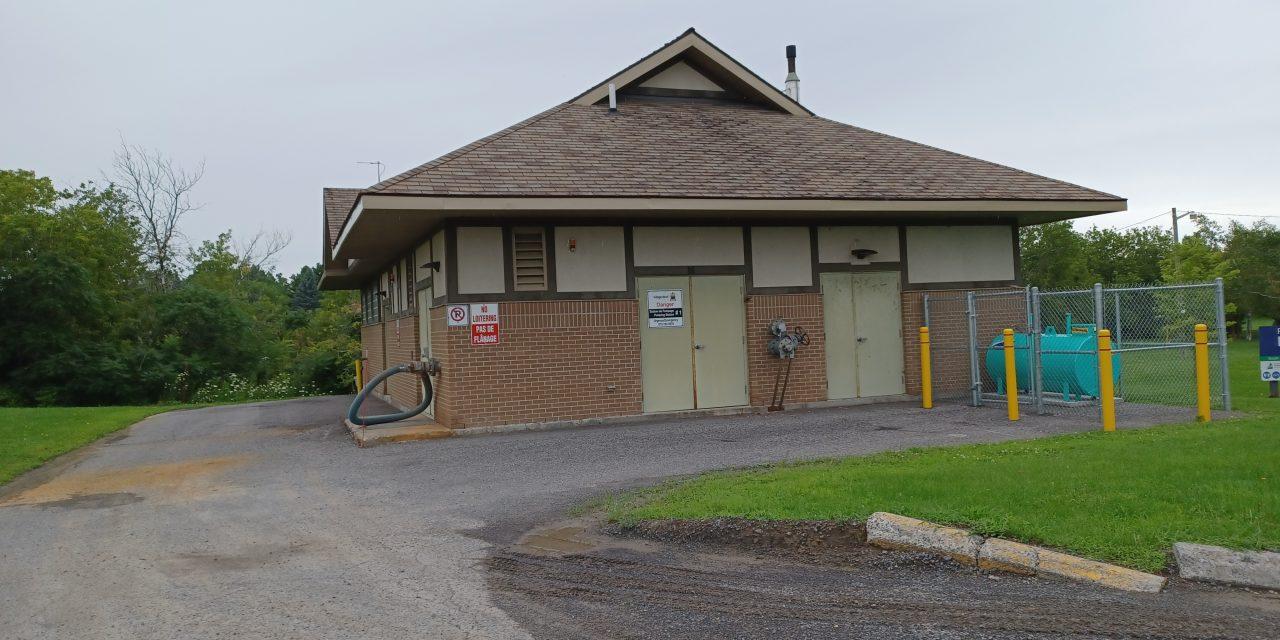Manganese in the water of the South Nation River is making the water in Casselman look brown again, and that has the municipality taking measures to resolve the recurring situation. Similar concerns arose in 2016 and again in 2019.
In response to citizens’ concerns, the municipality has advised that the water is safe to drink and to use for bathing and washing.
Manganese is a naturally occurring ore found in bedrock. Manganese ore is rarely used on its own, but is a key ingredient in the manufacture of steel and aluminum. It also dissolves easily, which is why somewhere, deep down below the surface, it is entering the water of the South Nation River, which also happens to be the source of water for Casselman. Brown or yellow water in Casselman has been occurring each summer for several years.
The Province of Ontario, which regulates drinking water safety, does not have a legal limit for manganese in drinking water. However, the federal government does have a guideline. According to Health Canada, the maximum acceptable concentration (MAC) for total manganese in drinking water is 0.12 milligrams per litre mg/L.
On July 7, the manganese level in Casselman was 0.35 milligrams per litre and 0.45 milligrams per litre. On July 21, the level was one milligram per litre.
The non-binding aesthetic objective (AO) for total manganese in drinking water is 0.02 mg/L. The AO relates to the characteristics of water that can affect its acceptance by consumers, cause problems with water distribution systems and fixtures, or interfere with practices for supplying good quality water.
The Municipality of Casselman has issued an advisory for the water system due to manganese levels exceeding the Health Canada guidelines. Boiling the water will not lower the manganese level. Showering and bathing with this water is safe. The advisory remains in effect unless another public notice is issued upon the request of the Eastern Ontario Health Unit (EOHU). The EOHU is recommending people use another source of water, such as bottled water to prepare baby formula and food or drinks for young children.
According to Health Canada, “Although humans need to consume small amounts of manganese to be healthy, too much manganese in drinking water can lead to some adverse health effects.
Drinking water that contains high levels of manganese, even for a short time, can be a health risk to infants.
Formula-fed infants may be especially at risk if the water used to prepare the formula contains levels above the guideline value. This is because:
- their brains are developing rapidly
- they drink more water based on body weight
- they absorb more manganese and are less able to remove it from their bodies
Exposure to manganese in drinking water can cause:
- neurological and behavioural effects
- deficits in memory, attention and motor skills
For adults and older children, short-term exposure to manganese in drinking water slightly above the guideline is unlikely to cause negative health effects. This is because the calculation for the guideline value is based on infants. By protecting infants, who are the most at risk, all Canadians are protected.”
On July 24, work began to flush the system as manganese levels lowered, resulting in clearer water. On July 25, the municipality retained the services of the engineering firm J.L. Richards & Associates Limited (JLR) to complete a Water and Wastewater Infrastructure Master Plan in accordance with the Municipality Class Environmental Assessment (MCEA) requirements. Two issues have already come up as a result of that process. It was determined that water and wastewater infrastructure projects will need to be prioritized to address future servicing needs and ensure appropriate performance and reliability of the water and wastewater systems. JLR is also recommending the municipality complete an environmental assessment to determine a new water supply source to support short, mid-and long-term development and water demand. Options include using the South Nation River as a continued source, a new groundwater supply well, or a transmission main from another municipality.
The municipality has also been seeking expert guidance from the Ontario Clean Water Agency (OCWA), which operates the water system, and the Walkerton Clean Water Centre, which provides resources and training to water system operators and municipalities. The municipality has also engaged the professional services of Bill Dallala, a chemical engineer specializing in water quality. He will visit Casselman’s water facilities and perform an evaluation of the system and then provide a comprehensive report containing recommendations.
Casselman Mayor Geneviève Lajoie insists the municipality is doing everything it can to ensure the effects of manganese in the water are being addressed. At the August 2 council meeting, she is introducing a notice of motion to prioritize a solution to the situation as a priority for the municipality.
“I’m following what the experts are telling me,” she said.



